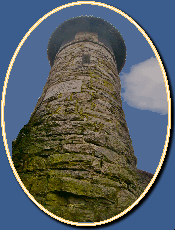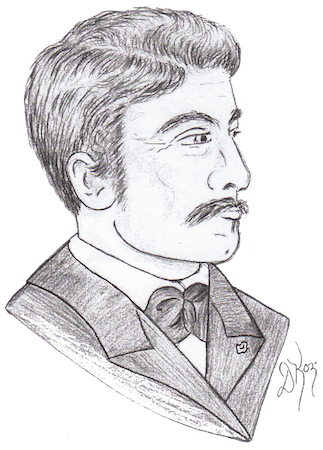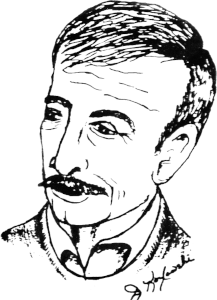Led Milford Schools into the Future
“One looks back with appreciation to the brilliant teachers, but with gratitude to those who touched our human feelings…” Swiss psychiatrist Carl Jung.
The year of 1883 ushered in momentous accomplishments that would have lasting effects on local communities as well as the nation. It was in 1883, for example, that New Yorkers witnessed the opening of the Brooklyn Bridge that would forever have a major impact on the way people traveled between Brooklyn and Manhattan for work or play.
That was the year, too, that would forever change the way Milford’s children would be educated. With less fanfare and fewer newspaper headlines than The Bridge, our local education system, that only years earlier saw the consolidation of separate and individual school districts into one with one administration, introduced a fearless and innovative leader who would prepare for and bring schools into the 20th century and beyond.
Few, if any educators, left their footprints on this community more than previous Hall of Fame inductee Joseph Foran and an earlier superintendent, one Herbert Mathewson. The native of Jewett City, Connecticut, was appointed principal of the former Milford High School in 1883, succeeding A.M. Drummond who had held the post for seven years. He later was named superintendent of schools and held that post until his death in 1927. His salary was an “enormous” $800 a year. Herbert Mathewson was and continues to be considered one of the leading proponents for public schools and is credited with developing what is now the modern and highly regarded school system that this community enjoys and for which is it well known.
Years after his appointment as Milford High principal he wrote in the school’s literary magazine that the high school had made great progress since he first assumed his duties. He noted, for example, “that in 1883 the high school course was a two-year program, that all students were grouped in one room and that the eighth grade pupils sat with high school pupils.”
By the early 1900s, under Mathewson’s leadership, however, Milford saw the beginning of its modernization. Devon School was completed in 1907. “The rapid development of that section of town made this new two-room school imperative,” he said. The following year, a 21-room school building was erected on West River Street opposite the town hall. It would be used as an elementary school and as a high school, moving students from the west wing of the "old" town hall. Because of limited school room space, Milford and other area communities had transported some youngsters to schools in New Haven. In 1909 the New Haven Board of Education notified these communities that they no longer would accept students from out-of-town. Under Herbert Mathewson, therefore, the local school board met the Elm City’s challenge by voting for and finding the resources to extend the local high school from two to four years and include college preparatory, business and science curricula. This was a progressive innovation for a small community at that time. The first graduation took place in 1910. As the then small town’s population grew, so did the need for additional classroom space so by 1913 it was necessary to construct a new brick school building.
As is frequently the case with budget-conscious city administrators and taxpayers, there were complaints at the time that the new schoolhouses were much too large for the needs of the town. Soon after construction of the new school was completed, however, Mathewson’s prophecy became a reality and every desk was occupied. A four-room school to serve Walnut Beach followed in 1916 and nine rooms and a kindergarten were added in 1923, four years before Mathewson’s death, to accommodate the growing population of the western part of town.
Mathewson Transformed the Local School System
For a period of 44 years Herbert Mathewson guided the local school system and directed and was responsible for its growth. When he arrived in Milford, for instance, there was a two-year high school that shared space with town offices. Between 1900 and 1925, the school system under Mathewson was transformed. In addition to the Walnut Beach, Central Grammar/Milford High and Devon schools, other schools were constructed as well in order to serve virtually every part of the then growing Milford community. These included construction of a new two-room school in Woodmont (1918) successive additions to the Devon Grammar that added 12 new classrooms and construction of a new four-room school to serve families living in Fort Trumbull (1919 to 1927). The West Main Street School fronting on the Boston Post Road was completed in 1931, four years after Mathewson’s death.
By 1939 Milford’s school system whose development began under Herbert Mathewson had 3,197 pupils in grammar schools and the high school. The town employed 69 grade school teachers and 26 high school teachers and had an annual operating budget of $250,000. Much of the town’s attraction to young families with children was its educational system.
When one considers the growth of the school system it appears to be a phenomenon considering that the central school system here was created not too many years earlier than Mathewson’s arrival in Milford. Until 1863, the town consisted of 12 individual and separate school districts. An act by the State Legislature in Hartford that year consolidated them into the one central district under one administration. In 1874 Milford’s Board of Education was created with 12 members, one each from the previous 12 districts. It would take a strong administrator to bring cohesiveness. That individual would be Herbert Mathewson.
When Milford voted in 1959 to construct three new elementary schools, Orchard Hills, Live Oaks, and a third. It beStowd on one of its strongest, most insightful and dedicated school administrators permanent recognition when it named the Herbert Mathewson School. It truly may be said, according to one historian, that “the seeds for the future education of local children were put down by Mr. Mathewson who built the foundation upon which the future of local education might grow.
“It is a greater work to educate a child in the true sense of the word, than to rule a nation…” William Ellery Channing.



